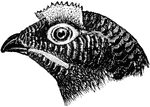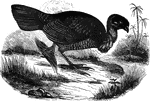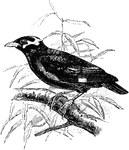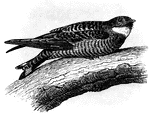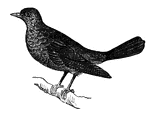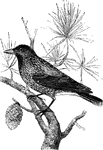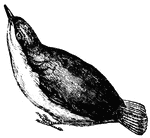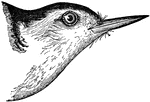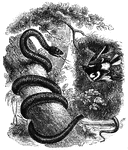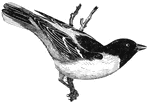204 illustrations of birds including: macaw, maculta, magpie, mallard, man-of-war, martin, meadow-lark, menura, merganser, merlin, mina, mino-bird, mockingbird, momot, moor-hen, moorfowl, mooruk, mound-bird, mourning dove, natatores, night-jar, nighthawk, noddy tern, notornis mantelli, nut cracker, nuthatch, oriole, ortolan, osprey, ostrich, oven bird, owl, and oyster catcher
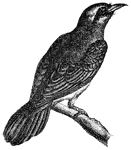
Momot
The Momots are birds still very imperfectly known. They are placed by systematists near the Toucans…
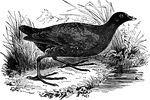
Moorhen
Also known as the waterhen, the moorhen lives around rivers and lakes, feeding on worms, insects, mollusca,…
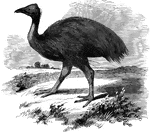
Mooruk
"The mooruk is a very curious bird, recently discovered in New Caledonia, and a specimen of which is…

Motmot
"Momotus brasiliensis, the Motmot, from Guiana to Northern Brazil, is somewhat similar in colour (to…
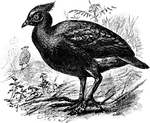
Mound-builders
The megapodes, also known as incubator birds or mound-builders, are stocky, medium-large chicken-like…
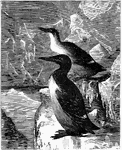
Murres
"Lomvia troile. Common Guillemot, or Murre. Adult in summer: Head and neck all around rich dark maroon…
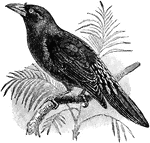
Finch-Billed Myna
"Scissirostrum dubium is a species of starling in the Sturnidae family." -Whitney, 1911

Nandu
Nandu or "Rhea Americana, the so-called American Ostrich... is found from Bolivia Paraguay, and South…

Natatores
A group of birds of the order natatores, whose webbed feet are well adapted for propelling them on and…
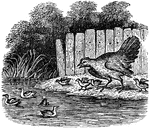
Nature Will Out
"A fine old hen some ducks and chickens hatch'd, / And with a mother's care their safety watch'd; /…

Large Night-hawk
"Chordediles poptue. Night-hawk. Bull-bat. Above, mottled with black, brown, gray and tawny, the former…

Small Night-hawk
"Chordediles poptue. Night-hawk. Bull-bat. Above, mottled with black, brown, gray and tawny, the former…
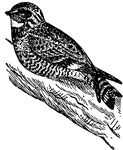
Nighthawk
An American insect-catching bird related to the whip-poor-will, a member of the goatsucker family.
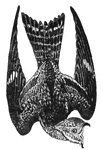
Nighthawk
The nighthawk is fit for catching insects on the wing by their very wide mouth, the gape extended far…
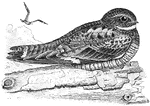
Nighthawk
Nighthawks are birds of the nightjar family in the New World subfamily Chordeilinae. They are medium-sized…

Nightingale
Nightingale, a bird famous on account of its brilliant song, which for quality and variety is not exceeded…
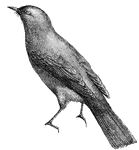
Nightingale
Nightingale, a bird famous on account of its brilliant song, which for quality and variety is not exceeded…
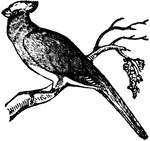
Nightingale
Nightingale, a bird famous on account of its brilliant song, which for quality and variety is not exceeded…
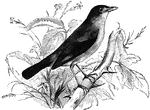
Nightingale
The nightingale is renowned for its song. Its name is derrived from the Saxon meaning night-singer.
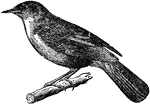
Nightingale
A bird of song, belonging to the thrush family. The plumage of both sexes is alike, being reddishbrown…

Nightingales (Philomela Luscinia and Luscinia Philomela)
"In the first rank of the Warblers stands the Nightingale, celebrated all over the world for its song,…

Nightjar
The Night-jar is a bird of evil omen in the estimation of our rural population. The reverse should be…
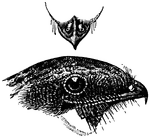
Nightjar Profile and Tubular Nostrils
Siphonorhis americana. "A genus of American Caprimulgidae or goatsuckers, having tubular nostrils. The…
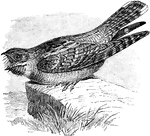
European Nightjar
The European Nightjar (Caprimulgus europaeus) is a bird in the Caprimulgidae family of nightjars.
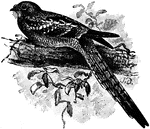
Long-Tailed Nightjar
The Long-Tailed Nightjar (Caprimulgus climacurus) is a species of bird in the Caprimulgidae family that…
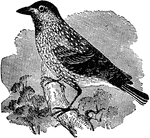
Nutcracker
"The Nut Cracker is a bird of Southern Europe. They feed on the seeds of pine and beech, and on nuts,…
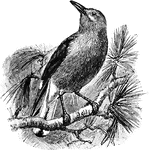
American Nutcracker
A bird with its plumage gray, with black and white wings and tail. Feeds on mostly pine nuts.

American Nutcracker
"Picicorvus. American Nutcracker. General characteristics of the European Nucifraga. Bill slenderer,…
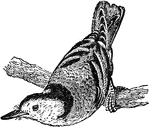
Nuthatch
A genus of birds found widely distributed in Eurasia, which somewhat resemble the starlings and woodpeckers.…
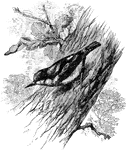
Nuthatch
"The colours in Sitta caesia, (Nuthatch) which ranges over nearly all the Palaearctic and Indian Regions,…
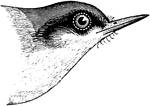
Brown-headed Nuthatch
"No black cap or white stripe on head. Upper parts dull ashy-blue; under parts sordid or muddy whitish.…

Common European Nuthatch
A small, omnivorous bird, which gets its name from the hatches or hammerings it leaves on nuts.
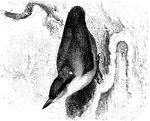
European Nuthatch
"Crown clear hair-brown; a white spot on nape; middle tail-feathers plain." Elliot Coues, 1884.
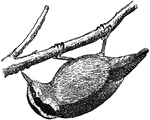
Red-breasted Nuthatch
The Red-breasted Nuthatch, Sitta canadensis, is a small songbird. Adults have blue-grey upperparts with…

Red-breasted Nuthatch
"Upper parts leaden-blue the central tail-feathers the same; wings fuscous, with slight ashy edgings…

White-breasted Nuthatch
Nightingale, a small creeping bird seen running up and down the trunks of trees, getting its name from…

White-breasted Nuthatch
The White-breasted Nuthatch (Sitta carolinensis) is a small songbird of the nuthatch family which breeds…
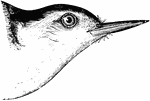
White-Breasted Nuthatch
"Upper parts, central tail-feathers, and much edging of the wings, clear ashy-blue; whole crown, nape,…
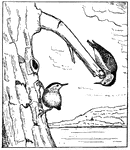
Nuthatches
The nuthatches are a genus, Sitta, of small passerine birds belonging to the family Sittidae. Characterised…
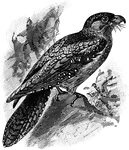
Oilbird
The Oilbird or Guacharo (Steatornis caripensis) is a bird in the Steatornithidae family, related to…

Oriole
"The Oriole is a well-known American Bird, of which there are varieties in Europe, Asia, and Africa."—(Charles…
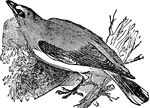
Oriole
A class of birds native to Eurasia, Africa, and the Indian Archipelago, though there are allied species…

Oriole
"A very beautiful American, bird, found in all parts of the United States, and as far north as 55 degrees…
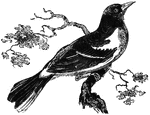
Baltimore Oriole
Familiar in orchards of the United States, the Baltimore oriole is also known as the golden oriole and…
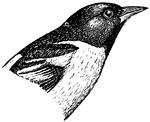
Baltimore Oriole
The Baltimore Oriole, Icterus galbula, is a small icterid blackbird which is on average 18 cm long and…
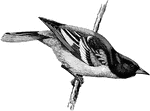
Baltimore Oriole
icterus baltimore, Baltimore Oriole, are glossy black, with yellow, bay, or orange patches-especially…
